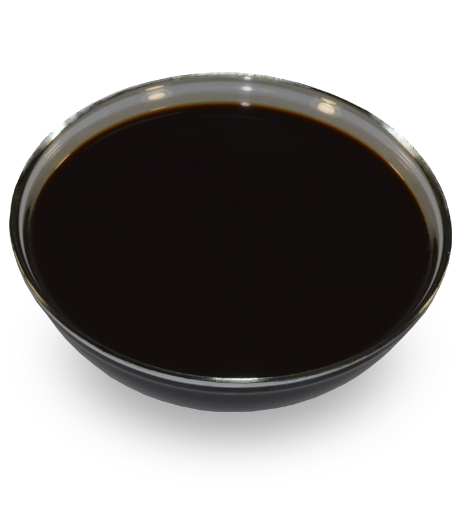Kvass wort concentrate
ГОСТ 28538-2017
Product description:
Kvass wort concentrate is a product obtained by mashing rye and barley malts, rye flour, and freshly fermented rye malt and fermented preparations in water. The resulting wort is separated from the grounds, evaporated in a vacuum apparatus at low temperature to the density of the concentrate, and subjected to heat treatment.
In appearance, it is a viscous, thick liquid of dark brown color, soluble in water, sour-sweet to the taste (with a slight bitterness) with the aroma of rye bread.
Download datasheet
Composition of raw materials for production
Rye flour;
dry rye malt fermented; rye malt unfermented/ barley malt;
water;
Applications
Preparation of traditional kvass (bread kvass, okroshka kvass, "Moscow" kvass) and other beverages from bread raw materials, preparation of kvass concentrates, use in baking and confectionery industry.
The main use of kvass wort concentrate is the production of kvass. Kvass is a traditional Slavic beverage with a volume fraction of ethyl alcohol not exceeding 1.2%, made as a result of the unfinished alcoholic and lactic fermentation of wort.
According to the classification of the international Beer Judge Certification Program organization, which is engaged in the training and certification of judges for beer tasting competitions, kvass is a special type of beer belonging to the category of "historical, traditional or indigenous beers" http://dev.bjcp.org/beer-styles/23-specialty-beer/.
In Russia, kvass is a national drink with deep historical roots
Purposes of use
Soft drinks are a favorable environment for the development of pathogenic microorganisms. At the same time, they often do not manifest themselves in the form of food poisoning, but, taking root in the digestive tract, produce micro-doses of toxins, which in turn are catalysts for severe and dangerous diseases not directly related to toxicosis.
Therefore, the issue of providing the beneficial microflora in food products (if any) with antagonistic properties in relation to harmful pathogenic microflora is particularly relevant. Such food products may include non-alcoholic fermented beverages and, in particular, their most common representative – bread kvass. This is practically the only group of beverages that uses not only exclusively natural raw materials, but also microorganisms which are beneficial and indispensable to the human body, which are present in the finished product in a viable state and are known for their antagonism to foreign microflora.
Dietary organic acids, particularly lactic acid and acetic acid, which are metabolites of lactic and acetic bacteria, respectively, are of particular importance in the human body. They are present in traditional Russian cuisine such as bread kvass, sauerkraut, and fermented dairy products. Lactic and acetic acids create favorable conditions in the intestine for the vital activity of beneficial bacteria, contribute to the oxidation of glucose, and have a bactericidal effect, inhibiting the development of pathogenic microorganisms
Advantages of use
The production of kvass from kvass wort concentrate (KWC) has the following advantages in comparison to the infusion mash method (from bread or grain materials):
1. There are fewer requirements for staff qualification: the preparation of malt and kvass wort from grain materials requires precise observation of all stages of the process.
2. Time savings: there is no hours-long stage of extraction of dry substances from grain materials. The kvass wort is produced simply by diluting the concentrate with water.
3. The preparation of kvass from a kvass wort concentrate requires only one-third of the equipment and production space
4. Energy savings: the preparation of a kvass wort concentrate is a very energy intensive long brew with several complex temperature fluctuations
5. Possibility of accumulating reserves of kvass wort concentrate before the high season for kvass: Regular supplies of raw materials are required with infusion mash method – rye and barley malt have a very limited shelf life – and this means relatively frequent deliveries of raw materials, which increases operational expenses
6. Fewer requirements for storage capacity: raw grain and malt must be stored in a dry, well-ventilated area without access to rodents, insects, or other animals
7. No problems with cake disposal
8. The high content of solids in kvass wort concentrate mean that it can be transported over long distances, and it is not harmed by freezing. The average consumption rate of about 30 kg per 1 ton of finished kvass leads to a significant reduction in logistics costs in the kvass production chain and allows kvass to be produced in the immediate vicinity of kvass markets.
